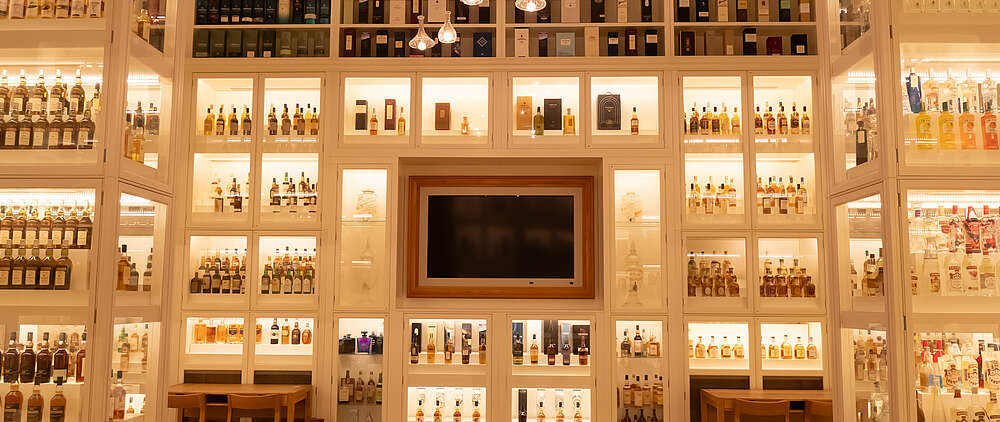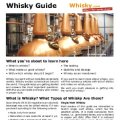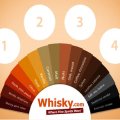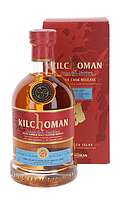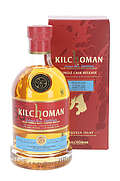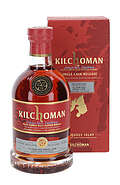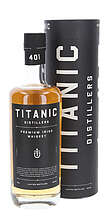Do you collect malt whisky?
This video and article is about the background and context of whisky collecting as well as important tips for your own personal collection. The main focus is on value enhancement - examples included. Learn which whiskies are suitable for collecting and why, and which are not.
Over millions of years, humans have evolved from nomadic primates to Homo Sapiens to today's Homo Post Atomiensis ;-). It took several million years and some, important characteristics such as the hunting and gathering instinct ensured the survival of our species. At this point, we turn our attention especially to humans as hunters and gatherers. These two characteristics complement each other perfectly. Hunting and holding on so that we don't lose everything we have worked hard to acquire. Presumably this instinct arose as a reaction to the seasons with their varying food supply. Care in time, so you have in need... These qualities have been inherited in us until today. You can already see it in children when they start to line up their beloved toys next to each other on the shelf. Many things are collected in daily life. This collecting instinct should not be seen in a negative light. For example, the collecting passion of the great world religions and their gathering of treasures of all kinds today gives us the opportunity to understand our history far better. In the private sphere, it used to be stamps and porcelain. Later, the zeitgeist switched to cheaper things like crown caps, beer mats and American car licence plates. Today, you won't find a good that isn't collected. Candy wrappers, matchbooks, pins and whisky bottles are still harmless collectibles in the multitude of objects in demand. Let's dig a little deeper. What makes a collectible? At the beginning of a passion for collecting there is a triggering moment. You receive something special as a gift that really captivates you or you see a small collection of things that you would also like to own yourself. In the case of matchbooks, things are simple. You put aside whatever you find. In the case of whisky bottles, it can get quite expensive very quickly.
The value of collections
This immediately raises the question of the value of collections. Stamp collections are so 'out' with the younger generation - you can't get 'outer'. The value of these collections is rapidly declining. More and more collections are being inherited and are entering the market. Years ago, the author of these lines tried to sell an inherited and almost complete stamp collection (Germany from 1933) in a specialist shop. The offer of the specialist together with his advice was devastating. A few thousand euros were offered for a few stamps. The still valid stamps should be used up and the rest thrown into the waste paper. - So much for the value of stamp collections. The value of collectibles depends on the normal economic correlations of supply and demand. Stamps, with the exception of the Blue Mauritius, have always been printed in millions. The old stamps can no longer be affixed to letters and so there is a permanent oversupply. Moreover, stamp collecting is 'out' and the little colourful pictures, mint or cancelled, are only worth a fraction of the amount printed on them. Why were stamps collected in the past and no longer today? It can only be guessed. The cancelled stamps were available free of charge. Foreign stamps awakened the wanderlust in us and so one thing led to another. Today, we can satisfy our wanderlust by travelling and letters are written less and less. The world is becoming multimedia.
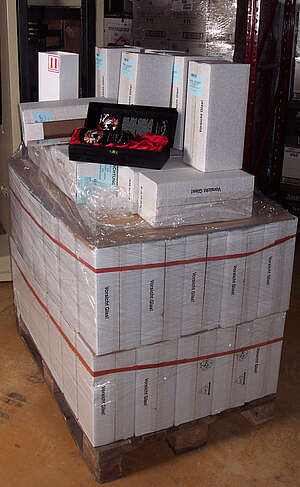
The Whisky Collection
The situation is quite different with whisky collections. Demand is higher than ever and the best bottles are constantly being opened and drunk by connoisseurs, despite all the lamentations of the collectors. What can be done about it? Fill even more bottles? Stocks of old malt whiskies are limited. Storage capacity remains finite and current demand continues to grow. Stocks are emptying so quickly that some distilleries are already producing single series per cask (Bowmore 1955, 1964, Macallan 1946, 1951, Ardbeg 1974, 1975, etc.). These single series cost a lot of money per bottle. 250.00 to 5,000.00 euros can be invested per bottle. But is the bottle worth this money? Will the price continue to rise in the future? Or has a resourceful salesman driven the price up through artificial scarcity? According to the motto: "Believe me, this bottle is the absolute last piece. There will be nothing more after that. As XYZ collector, you must have it." Please remember: At least a few hundred of each bottle are bottled, as you can see from the 'rare' Ardbeg and Springbank in the pictures above. The bottles leave the bottling plants by the pallet. Very few bottles can be said to be unique. These arguments are often just price gouging. - Please remain critical.

Exactly one bottle from each distillery?
The passion for collecting is insatiable and after a short time every collector asks himself how he can earn money with his knowledge of the collector's item. In the past, one bought at least four stamps. Two were cancelled and two were kept mint. One went into the collection and two were left over for exchange. A real whisky collector always buys three bottles. One to drink, a second for the collection and a third to exchange later when the price has risen accordingly. This is an excellent way to increase your collection. By selling the duplicate bottles, one can raise additional money to fulfil wishes that go beyond the fixed collection budget. The whisky collecting passion usually begins with the desire to own a bottle from each distillery. The way is simple: you buy what your wallet can afford. For about 5,000 euros, you get about 100 bottles from different distilleries and then have to save up more money for a large display case. At this point at the latest, the whisky collector begins to think more about the meaning and further development of his collection. If he was initially concerned with the great-looking bottles, his attitude slowly changes towards rare and scarce bottles. Over time, one has noticed that the standard bottlings are always available. One has seen enough of these bottles and begins to look for rarities.

Expensive findings - A few rules
At this point I would like to pass on a few insights to beginner collectors. These are things we have worked out over the past 10 years together with our first customers and partly with a lot of money on the customer side.
1. budget
Do not collect wildly. Set a collection budget for each year with your life partner. This will save you trouble later on. Save at least half a year's worth of money so that you have immediate access if the worst comes to the worst. A dealer will rarely make a reservation for you. **
2. strategy
Set your collection goals and your collection strategy in writing. This will prevent you from getting bogged down and spending money that you will almost always regret afterwards.
3. control
Keep a record of your purchases and sales. Monitor the achievement of your goals.
| ** Reservations will only be made for you by a small retailer who does not have enough customers for this type of bottle. And you can't be sure that this dealer won't sell to someone else who offers more in between. Why should the dealer prefer you? In case of doubt, he still has customers and friends who are closer to him than you. The excuses are manifold and usually read: "The bottle didn't come. There was breakage in the shipment. The purchase price has increased ..." You will certainly have heard some of these. You can only be sure if you buy immediately. Full stop. |
The question is: Who is allowed to reserve? Is it allowed to reserve? Can a dealer afford to reserve at all? Doesn't the dealer harm the rest of his clientele by reserving? What counts more? Finding the treasure (reserving) or lifting it (buying)?
Whisky.de does not reserve! All orders are processed in the chronological order in which they are received (first in - first out). Anyone who has been on holiday or is currently experiencing a liquidity bottleneck is looking down the stovepipe, as they say flippantly here in Bavaria. In addition to equal opportunities, the luck of the quicker is equally important if there are only a few bottles.
Everyone is free not to accept these three rules mentioned above. Without a goal in mind, you will not reach a goal either. It can also be fun to simply collect beautiful bottles. However, just like collecting stamps, you don't have to be surprised afterwards if nobody wants these bottles.
In August 2002, a famous whisky collector decided to reduce his huge collection to the Islay area. More than 1,000 bottles, some of them quite rare, were put up for sale. After two months, only 6% of the bottles were sold at moderate prices. Who is looking for a Coleburn 1972 or Deanston 17J?
Smaller but comparable collections are regularly offered to Whisky.de. Unfortunately, we have to turn them down just as regularly, as we do not specialise in buying and selling collections. You might still find a buyer for a single, rare bottle. Two dozen or even more of these individual pieces can only be sold at a considerable discount. Whisky.de is not prepared for this kind of sale. You will have no choice but to drink these bottles.

Professional collecting
If you follow this advice, you will have moved away from being a field, forest and meadow collector and towards being a professional collector. You no longer collect by appearance, but you think about the future value development of a bottle before making a purchase decision.
This is a small step for you but a big leap for your collection. In the following we will strategically select bottles that may later fetch thousands of euros at major auctions at Christie's or McTear's in Glasgow. In September 2002, a Black Bowmore fetched 2,800.00 Euros at Whisky.de.
Very soon you will realise that many of the bottles you have accumulated up to this point no longer deserve a place in your display case. You cannot sell them. It's like with stamps. Everyone has them and no one wants them. Look at the pallets of collector bottles shown above. There are also hundreds of these select 'rare' bottles in Germany and thousands in Europe. You have to be particularly selective to find the bargains among them. - We will see how to do that later.
What can you do with the surplus bottles? Now the whisky collection plays out its incredible advantage over the stamp collection. You drink up the 'worthless' or we should better say 'the bottles with no foreseeable increase in value' yourself. You haven't wasted any money. It is even fun!
A self-test
Let us persuade you to take a little test. The following bottles were listed in the first edition of Whisky.de's special whisky catalogue in 2000. The prices have now been converted to euros. Which would you buy with the intention of getting an above average price?
| Banff Chieftains Choice | 18J | 43% | 46 | Euro |
| Macallan 0,7l + 1,0l | 12J | 40% | 31 | Euro |
| Macallan | 25J | 43% | 173 | Euro |
| Glenallachie Signatory | 1991 | 43% | 31 | Euro |
| Springbank | 21J | 46% | 92 | Euro |
| Bowmore | 30J | 43% | 203 | Euro |
| Loch Lomond | 40% | 20 | Euro | |
| Loch Dhu 1,0 litre | 10J | 40% | 49 | Euro |
| Ben Wyvis Signatory | 1968 | 51% | 1150 | Euro |
| Caperdonich G&M | 1968 | 40% | 91 | Euro |
| Johnnie Walker Blue Label | 40% | 127 | Euro |
Many of our collector customers bought these bottles back then. Which of these do you personally have in your collection? And with what result? There are stars among them, as well as numerous losers and flops. Each of these bottles has a little background story, which we would like to tell you here. Of course, this is going to be a bit long, but you as a collector are interested. All other readers have stopped following by now anyway. Let's get into the details with the 'rare' Banff. After this table there is still important advice to come! - So please read on.
 Banff Chieftains Choice 18 years
Banff Chieftains Choice 18 years
The Banff distillery closed back in 1983 and was subsequently demolished. The last casks are being bottled. It won't be too long and bottles of Banff will no longer be available. That is why there is a rush on these bottles at the moment. This Chieftain's Choice bottling is the cheapest of all the Banffs. Will it therefore go up in price? There are three reasons why not:
A) The bottle is not an original bottling but comes from an independent bottler (UA). This brings the price down very significantly.
B) These bottles were already too expensive in 2000 to be drunk more. Most of them will have survived and are now in the showcases of field, forest and meadow collectors.
C) The bottler seems to have more of these bottles on offer. Currently, a 21J Banff is on offer for 57 euros. Because of its higher age, it should outperform their bottle. And then there is a Signatory bottling with 20 years for 55 Euros released in summer 2002. Signatory has a better reputation among independent bottlers (UA).
In sum, Banff is a very unproductive distillery for value collectors. If you want to have a complete collection, you need such a bottle, of course. It's not a great malt either, as the distillery was closed and demolished due to lack of water and quality problems. Don't drink the bottle and assume that no one will want this bottle for the next 20 years.
 Macallan 12 years 0,7 + 1,0 litre
Macallan 12 years 0,7 + 1,0 litre
Macallan is one of the most important distilleries in Scotland. But you have to learn to distinguish high volume bottles from short run series. The 12-year-old bottling is the most widely circulated, along with the 10-year-old. If any bottle is widely distributed, it is this one. In 1999, the design of the bottle was changed. The completeness of a collection includes the old, round can. With millions of bottles sold, top prices will never be achieved. Today, the bottle costs 33 euros. Allow me to say a word about the 1.0 litre bottles: they are not popular with collectors because they are too big for most display cases. Only in the case of extremely rare bottles does it not matter whether you have 0.7l, 0.75l or 1.0l bottles.Addendum 2014: The successor bottles were taken off the market. This has led to an extreme price increase. This is how quickly a 'bread-and-butter' bottle can become a collector's item.
 Macallan 25J-1975/2000
Macallan 25J-1975/2000
All older Macallan are unreservedly suitable for collecting. Especially if they have a vintage mark, no matter how small. While in 2000 this bottle still cost 173 Euros, the remaining stocks of the 25J-1971 sold for 254 Euros in 2002. This corresponds to a price increase of 50% over a few years. ATTENTION: Due to Macallan's limited storage capacities, the current 25-year-old no longer bears the vintage. This is a clear minus for collectors. Nevertheless, the 25J is still suitable for collecting and even more so for drinking. You can do little wrong.
 Glenallachie Signatory 1991
Glenallachie Signatory 1991
This distillery is working at full speed. The Sign. Bottle has currently been replaced by the same vintage, but with two years longer maturation. The two years older bottle costs only 3 euros more in 2002. Among collectors, however, a different bottle is sought after. It is the old original bottle with 12 years. Should a new original bottling appear, no one will crow about the Signatory bottling any more. From a collector's point of view, this bottle is destined to be consumed soon. - It also tastes quite good.
 Springbank 21 years
Springbank 21 years
As a collector, you should buy books from experts so that you know about the history of distilleries. The standard work is the Whisky Lexicon by Walter Schobert and every new edition of the little Michael Jackson.In it you can read: Springbank has been closed for a long time and there are no more casks over 15 years old. The bottlings are coming to an end. It will be another 6 years before the next 21-year-old is bottled. And then the new bottle shape will be different. Sure sign that the old bottle shape will remain recognisable. A collector with a desire to increase value will not be able to get past this bottle. The remaining stock of this bottle was sold in 2002 for 159 Euros. Value increase of over 70% in two years. In addition, the bottle is very popular with connoisseurs. This further reduces the stocks.
 Bowmore Seadragon 30 Years
Bowmore Seadragon 30 YearsThe extremely important Bowmore distillery is also suffering from the heavily emptied warehouses due to the malt whisky boom. Almost no casks of 30 or more years are left. The 30-year-old is also highly sought after by connoisseurs.
In contrast, the great ceramic decanter is detrimental to a massive increase in value. Collectors pay a lot of attention to the motif, so that many filled bottles end up in display cabinets. Also, some alcohol always evaporates through the pores of the ceramic. Carafes are never as tight as glass bottles. The resale suffers from lower fill heights. Nevertheless, the bottle has already risen from 132 euros in 1996 to 238 euros in 2002. That is 80% in 6 years. The absolute last bottles will reach 300 Euro and more very quickly in 2003.
 Loch Lomond
Loch LomondThis is the original bottling without age statement of Loch Lomond. The first bottles were sold in 1998 as a rarity for around 20 Euros. Today, the bottle can be found in supermarkets for around 10 euros. The quality is extremely modest. You can write off the 20 euros. A connoisseur will not drink this bottle.
But the bottle could have become a rarity if the supermarkets had not accepted it and Loch Lomond had stopped production again. It would have been a great bargain. But it's very rarely worth buying a first bottling. Rather wait and watch from a safe distance how a new malt develops. For example, the first bottlings of the Glengyle distillery, which has been rebuilt in the old buildings, are currently being sold directly by the distillery. 270 euros for a bottle whose contents have not even been distilled yet! Only one person earns money here. And that is the distillery.
 Loch Dhu 1.0 litre
Loch Dhu 1.0 litre
The black malt Loch Dhu is such an exception. Launched as an experiment, it did not catch on in the market. The taste of this extremely coloured malt was too bad. After a few years of production, the experiment was discontinued. Almost all bottles were opened out of curiosity. Launched in 1998 for 39 Euros, the last bottles achieved sales prices of 75 Euros in 2002. Increase of almost 100% in 4 years. Due to the extreme scarcity of bottles, the 1.0 litre bottles are also sought after.
 Ben Wyvis Signatory 1968
Ben Wyvis Signatory 1968It is captivating to own such a rare bottle. It is the only bottling of this malt for many, many years. There is said to have been an original bottling in Canada once before 1977. Three casks were bottled in 2000 and the cost price of 1150 euros was pure wishful thinking. By far not all bottles have been sold. Prices have even come under pressure because the market did not accept the bottles. In addition, a rumour persists that the former owner of the distillery still has casks and that an original bottling will soon come on the market. But this may also be a defensive rumour from Signatory's competitors. One is annoyed that Signatory got all three casks for bottling.
 Caperdonich Gordon & MacPhail's 1968
Caperdonich Gordon & MacPhail's 1968
The distillery Caperdonich produces hurriedly under the pseudonym Glen Grant No. 2. Lots of malt is produced and an independent bottling of a producing distillery is not sought after by collectors (see Glenallachie). Nor is this bottle a special treat and so one has no choice but to give this bottle to one's best friend as a 40th birthday present in 2008. The stagnation of the price at 95 euros in 2002 reflects the situation.
 Johnnie Walker Blue Label
Johnnie Walker Blue LabelBlended whiskies are not collected, but drunk. Even if they are as elaborate and expensive as the Blue Label of the world's biggest blend brand. Only pre-war blends with small editions currently fetch usable prices at auctions. Malts, on the other hand, are in a class of their own. If you consider that tens of thousands of bottles of the Blue Label are sold worldwide every year, you are far from being looking at a unique piece, despite the individual numbering. The price development reflects this. At 124.50 euros, the bottle has become cheaper.
For ambitious entry-level collectors, my comments were certainly unpleasant. I would also like to apologise for that. Extreme examples, clear words and exaggerations are a means and an end to make basic connections clear. My aim was to spare you as a collector negative experiences for the future.
Recommendations
Let's be constructive. Which malt whiskies are suitable for collecting at all? The legendary Black Bowmore already cost over 100 euros when it was first released. The inexpensive examples mentioned above showed no increase except for Loch Dhu. For starters, the ambitious collector with a desire for maximum value should be prepared for bottles with shop prices around 100 euros. Of course, there may also be a bottle with a price of 70 euros. The important thing is that the bottle is more expensive than the average consumer can afford. But it must not be too expensive, otherwise the increase in value will not be great enough. Auction proceeds are not sky-high either. To repeat: it is certainly not the countless bottles between 30 and 40 euros. Here, the output of the distilleries is too great. The pictures above of the pallets with collection bottles already make this clear. The inexpensive bottles leave Scotland in containers, and there are limits to how high they can go. If the bottles are already very expensive when they are purchased, the increase in value in the coming years is already anticipated in the purchase price by the distillery. There is no fixed upper limit. But at the moment it will be around 200 to 300 euros.

Which distilleries collect?
Which distilleries are sought after at all? Before we talk about distilleries, let's ask about the bottler. I know of no other independent bottler than Gordon & MacPhail's for which high collector's prices could ever be realised. And I don't mean a few hundred euros for an old Cadenhead's bottle, for example. I mean really high proceeds of over 1,000 euros. And with G&M, it was also only the bottlings that they carried out on behalf of the distillery with the official label. You can safely forget about the house brands MacPhail's or Glen Avon. Collectors are looking for originals - not copies. And even if the 1968 Bowmore from Signatory looks great. It's only there to be drunk. A hardcore collector won't pay anything for it. The Silent Stills Edition from Signatory is no exception. The current Port Ellen Original Bottling (Annual Release) already fetches better prices than the former Signatory Port Ellen wooden box with miniature and cask piece. The Rare Malts Selection from Diageo is an exception. Since the series bottler is also the owner of the distilleries, this series assumes the status of the original bottling. It is only when no more original bottlings come onto the market for several years that these bottles begin to rise. Lastly, we turn to the distilleries themselves. The auctions of old malt whisky bottles have the highest influence on the value development of young bottles. Only distilleries that had malt whisky bottles on the market shortly after the last war, or better still before the war, have any chance at all of achieving high collector values today. Christie's and McTear's auctions have a guiding function. This reduces the distilleries with potential for extraordinary increases in value to just under a dozen.
Tips for your purchase
1. buy only original bottlings and no independent bottlers. 2. buy only bottles from the top distilleries (Macallan, Bowmore, Springbank, Glenmorangie, Highland Park, ...). Which other distilleries? Islay? - certainly! Lowland? - rather not. Speyside? Yes and no. Not the late-built ones but certainly the older ones, like Mortlach, Linkwood, Glen Grant or Strathisla. Young distilleries like Clynelish, Braeval or Teaninich are better left out. 3. Buy special bottlings. Not Bowmore 17J, but rather Bowmore Claret; not Macallan 15J, but Macallan 18J with vintage or better still Gran Reserva; no Glenmorangie 18 years, but rather the special finish bottles like Tain l'Hermitage or Sauterne Finish. In principle, any bottle with a vintage is suitable. 4. Keep the purchase price in the range of 70 to 250 euros. Observe the market and read a lot. When the price of individual bottles rises sharply, it is usually too late. It is very difficult to recapture this increase in value over the years. It is very difficult to sell your collector's bottles. The outstanding pieces can be sold at auctions. Large auction houses are rarely enthusiastic about bottles for less than 300 euros. Their premium on such bottles is too low to make money with them. Put yourself in an optimal position by buying strategically. Then you only have to wait between 10 and 30 years before you can reap the fruits of your labour. Only a few bottles in your collection will achieve extreme price increases. But a few will certainly be there.

The special tip
For your long reading to the end, I would like to give you a hot tip: In 1996, a 1936 Glen Grant G&M Malt cost 485 euros. Today (2006), a G&M Mortlach 1936 already costs 1099 euros. With these old malts, only the year plays a role. Differences between distilleries are no longer made. Within 6 years one could achieve an increase to 2.3 times.
In the future, the ratio will not develop much differently. You just have to take slightly younger malts. For example, Glenlivet 1948 is a very rare post-war vintage. There was very little barley available for distilling. Most of it was given as bread to the starving population. The same applies to Glen Grant 1949. Great Britain starved longer after the war than Germany and food stamps were abolished in Scotland years later than in Germany. A sure guarantee for a low number of casks, of which only a few bottles are left.

P.S.: Addendum 2010: This tip was published in 2003. Today, the Linkwood 1939 and the Glenlivet 1948 are already out of stock. I wish you good luck with your collecting. Please do not expect us to buy back bottles from you at a later date. Our business model does not involve speculation. We live only from daily sales.



